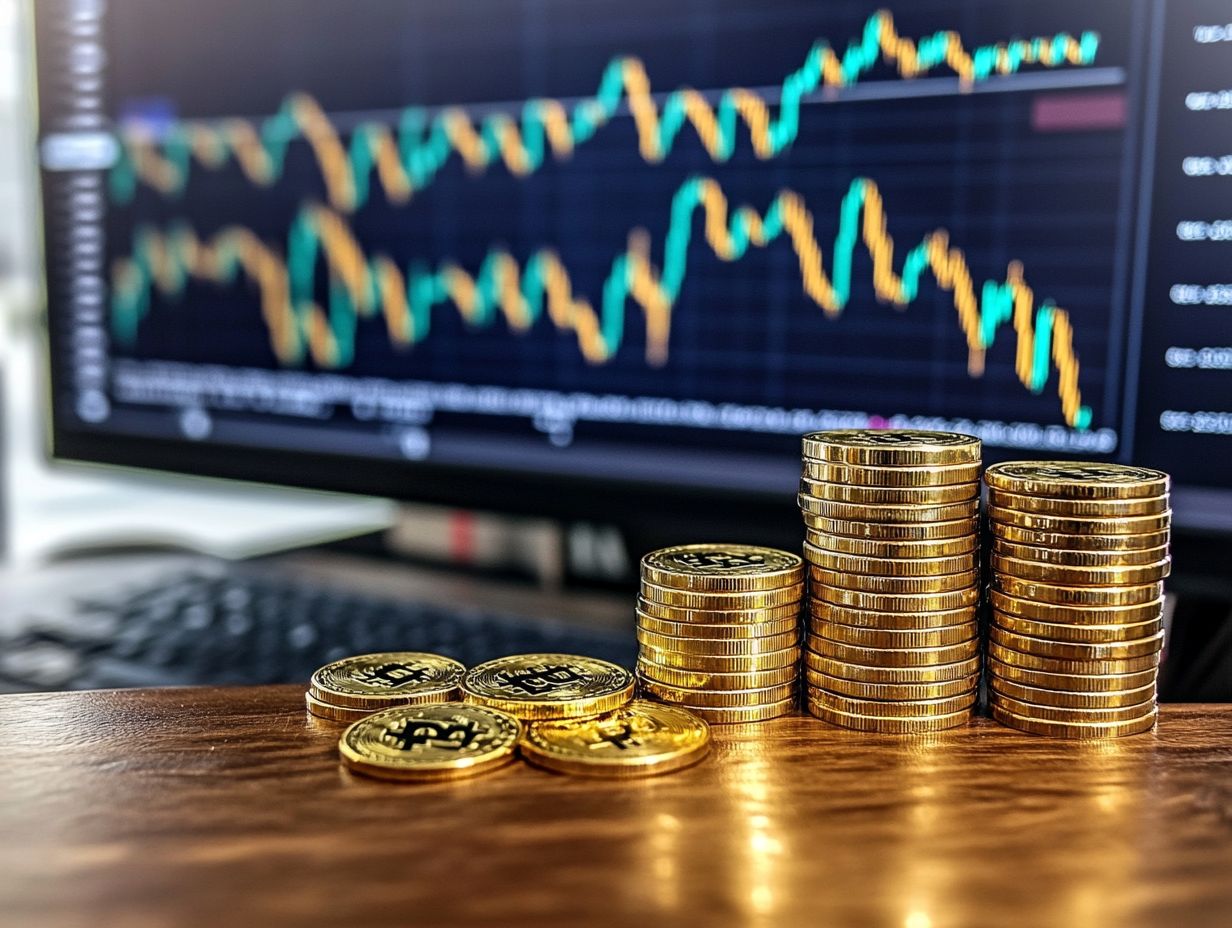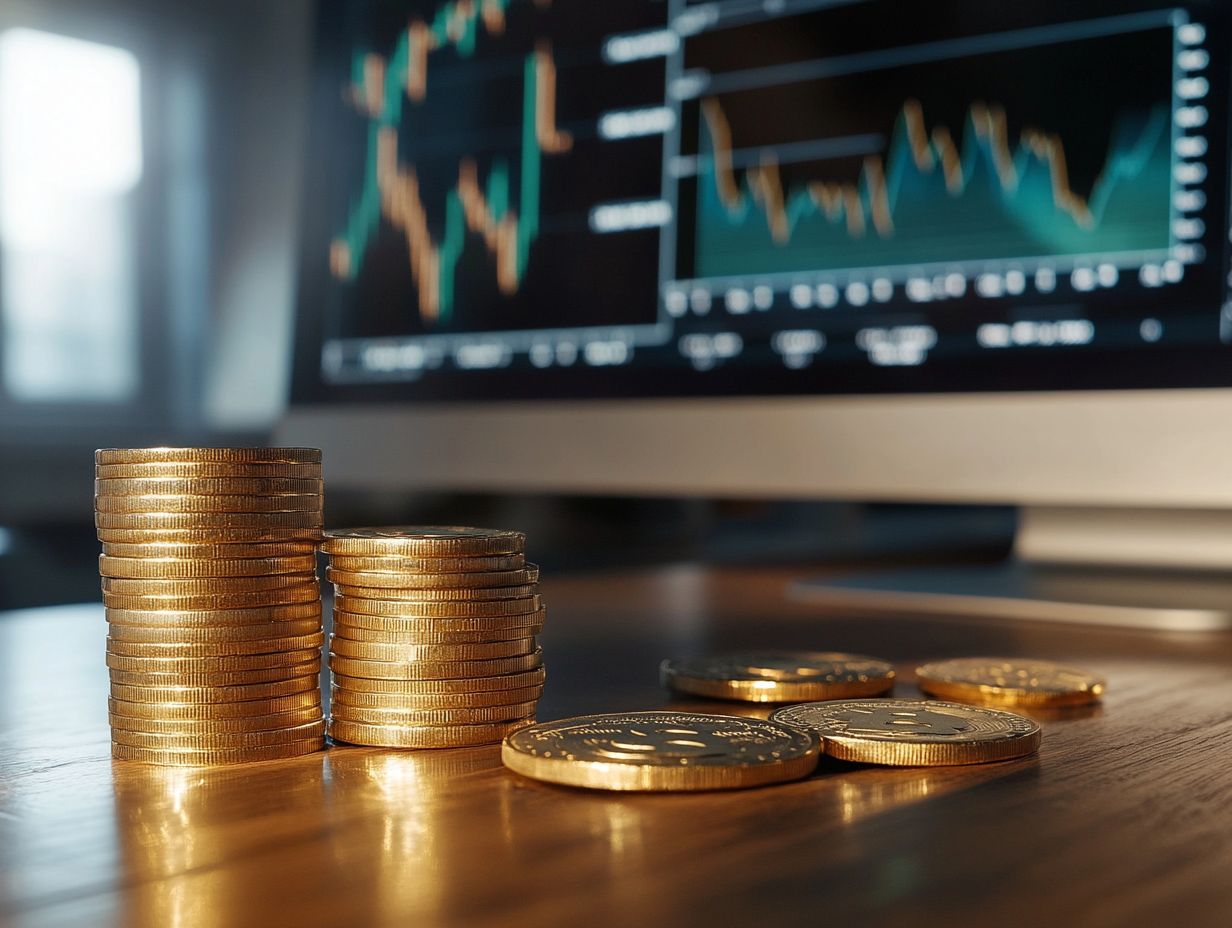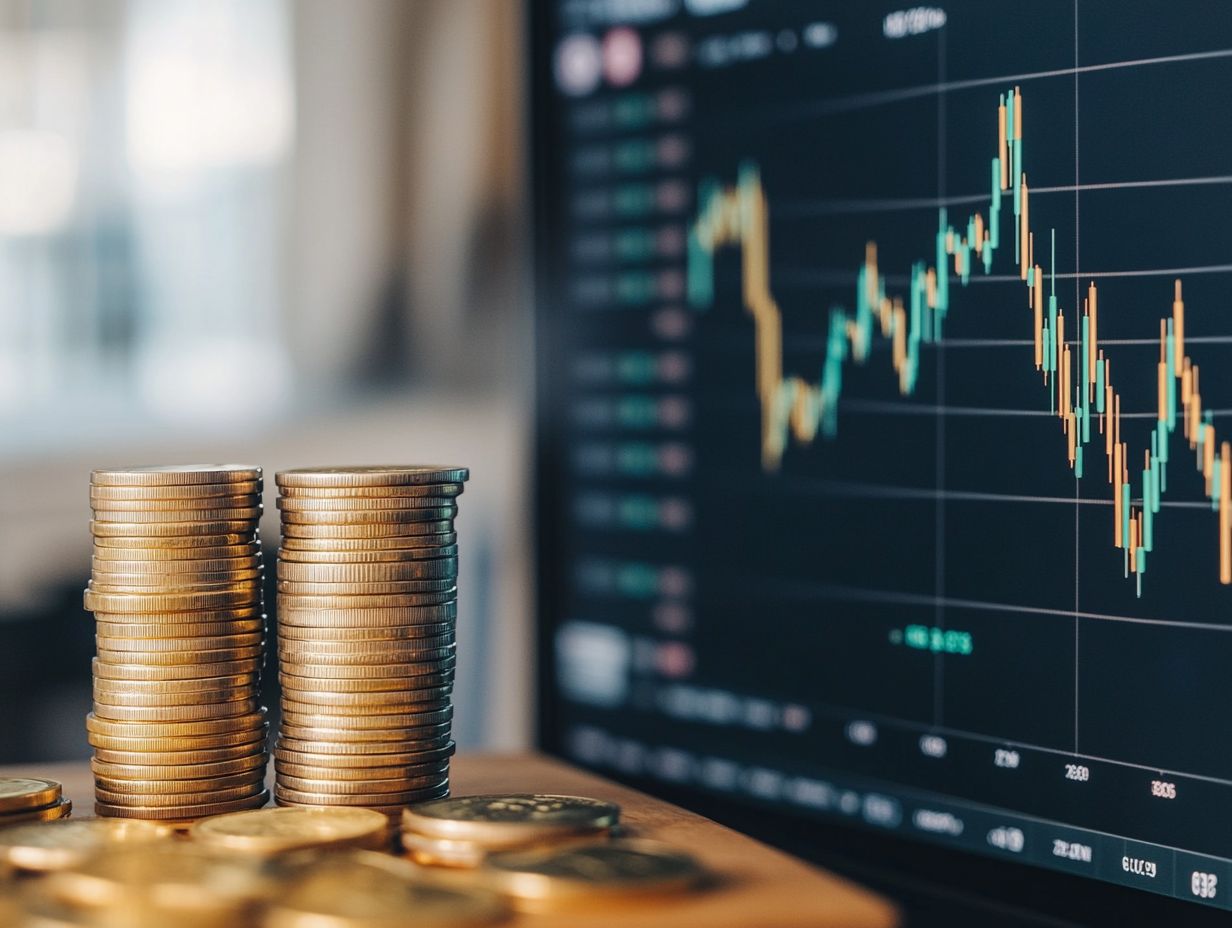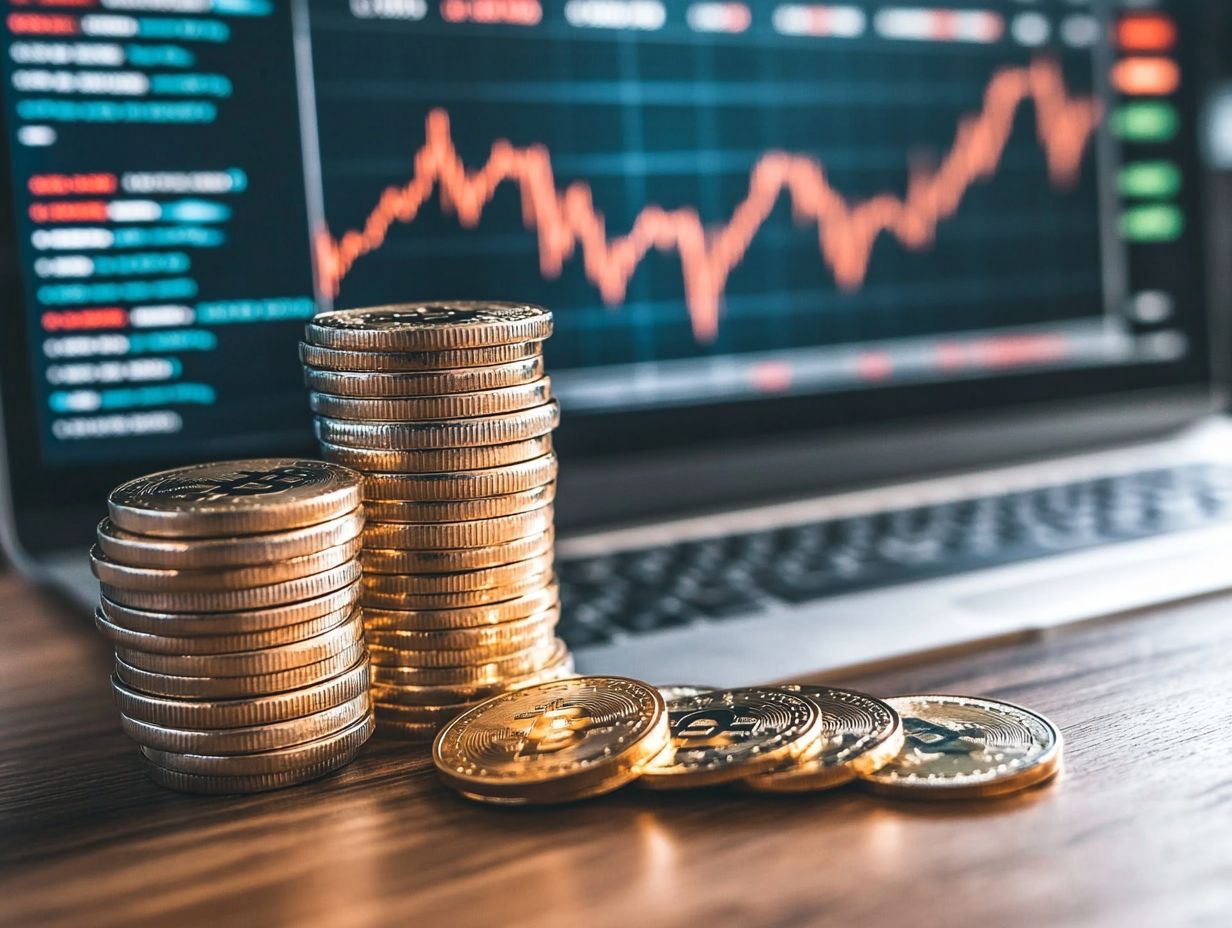How to Diversify: Physical vs. Paper Metals
Investing in metals can be a savvy strategy to diversify your portfolio. Yet, the choice between physical and paper metals might leave you feeling a bit overwhelmed.
Each option presents its own distinct advantages and disadvantages. These can significantly influence your financial strategy and risk profile.
This article explains the definitions and differences between physical and paper metals. It delves into the pros and cons of owning each type and provides valuable insights on effectively diversifying your investments.
By the end, you will be well-equipped to make informed decisions that resonate with your personal goals and risk tolerance.
Contents
- Key Takeaways:
- Physical Metals vs. Paper Metals
- Advantages and Disadvantages of Physical Metals
- Advantages and Disadvantages of Paper Metals
- Factors to Consider When Choosing Between Physical or Paper Metals
- Strategies for Diversifying with Metals
- Frequently Asked Questions
- What is the difference between physical and paper metals?
- Why is it important to diversify between physical and paper metals?
- How can I invest in physical metals?
- What are the risks of investing in paper metals?
- Are there any storage or maintenance requirements for physical metals?
- Can I convert my paper metals to physical metals?
Key Takeaways:

Diversification is crucial for managing risk in investments.
Physical metals offer tangible ownership and protection against market volatility. However, they require storage and may be less liquid.
Paper metals provide convenience and flexibility. Still, they carry the risk of the other party not fulfilling their side of the deal and lack physical ownership.
What is Diversification and Why is it Important?
Diversification is your go-to investment strategy. It allows you to spread your investments across various asset classes think physical gold, paper gold, mining stocks, and gold ETFs.
This approach helps mitigate market risk and enhances your portfolio’s performance. The beauty of diversification has protective qualities; it shields you from market fluctuations and financial turmoil.
It ensures that a downturn in one area doesn t significantly impact your overall portfolio. In today s unpredictable market, effective asset allocation is your best defense against unexpected losses.
Whether you re just starting or a seasoned investor, incorporating different types of assets like gold bullion and gold certificates minimizes the risk of the other party not fulfilling their side of the deal. You also gain access to various aspects of the gold market.
For example, physical gold acts as a tangible asset during economic uncertainties. Meanwhile, gold certificates provide a more liquid option without the hassle of physical storage.
When inflationary pressures strike, your diversified portfolio can serve as a hedge. Different asset classes tend to react differently to economic changes.
Overall, a well-diversified portfolio boosts liquidity. This facilitates easier buying and selling an invaluable advantage in rapidly changing market conditions.
Physical Metals vs. Paper Metals
In the world of investing, it s essential for you to grasp the distinction between physical metals like gold bullion and paper metals such as gold ETFs and gold certificates.
Physical metals represent tangible assets that many view as a safeguard against inflation and financial instability. On the other hand, paper metals provide the advantages of liquidity and ease of trading.
By understanding these nuances, you can navigate your investment options more effectively. This helps customize your portfolio to align with your financial goals.
Definitions and Differences
Physical gold refers to tangible assets you can actually hold in your hands, like bullion and coins. In contrast, paper gold includes investment instruments, such as gold ETFs and certificates, that signify ownership without the need for physical storage.
Both forms of gold play unique roles in your investment portfolio. Physical gold is often praised for its real value and has a long-standing reputation as a safe haven during economic downturns and market volatility.
Many investors turn to physical gold as a hedge against inflation and currency devaluation. Historically, it has maintained or even increased its value during significant financial crises.
In contrast, paper gold offers greater liquidity and flexibility. This enables swift transactions without the hassles of physical handling.
However, it can be more sensitive to market fluctuations since it s influenced by broader economic factors. Thus, understanding the advantages of both can significantly shape your strategic investment decisions.
Choosing the right type can be the difference between security and vulnerability. Balancing the desire for tangible security with the necessity for quick access to capital is crucial.
Advantages and Disadvantages of Physical Metals

Investing in physical metals, especially gold and gold bullion, presents a unique mix of advantages and disadvantages that you should thoughtfully consider while crafting your investment strategy.
One of the standout benefits is the intrinsic value of physical gold, which acts as a reliable hedge against inflation and a safe haven during turbulent financial times. However, it’s essential to weigh the challenges that come with it. These include market risk, storage concerns, and liquidity issues. To make informed choices, consider how to invest wisely: physical vs. paper. These factors can greatly affect your decision to incorporate physical metals into your portfolio.
Pros and Cons of Owning Physical Metals
Owning physical metals like gold bullion presents a distinctive mix of advantages and disadvantages that can profoundly influence your investment decisions. For instance, gold offers a reliable hedge against market fluctuations and inflation.
This unique quality makes gold particularly appealing for those looking to safeguard their wealth during uncertain economic times.
Its tangible nature ensures that it retains intrinsic value, unlike paper investments that can be swayed by market perception. However, weigh potential drawbacks carefully, such as liquidity challenges.
Selling physical gold often requires time and effort, not to mention the risks tied to transactions involving other parties.
Let these factors guide your asset allocation strategy within a diversified portfolio. Effectively balancing gold s benefits with its downsides is essential for achieving long-term financial success.
Advantages and Disadvantages of Paper Metals
Investing in paper metals, such as gold ETFs and gold certificates, offers distinct advantages and disadvantages that you should consider carefully to refine your investment strategy.
One exciting advantage is the liquidity these instruments provide, enabling you to access cash swiftly without the burdens of physical storage an especially valuable feature during times of market volatility.
Recognize that these investments come with different types of market risk and counterparty risk, which can impact your overall investment performance. Balancing these factors will help you make informed decisions in your investment journey.
Pros and Cons of Investing in Paper Metals
Investing in paper metals, especially through vehicles like gold ETFs, presents a unique mix of advantages and disadvantages that can significantly influence your financial landscape.
On one hand, these investments typically come with lower transaction costs compared to traditional physical holdings. This accessibility enables you to enter the gold market without incurring hefty fees.
Additionally, the liquidity of these investments allows for swift buying and selling, adapting to ever-changing market conditions. However, it s crucial for you to remain aware of the inherent risks, including market volatility and counterparty risk, which can affect your returns.
Recent trends show that gold prices often soar during economic uncertainty; it s time to consider how you ll allocate funds to gold in response to evolving market dynamics.
Factors to Consider When Choosing Between Physical or Paper Metals

When weighing the decision to invest in physical gold versus paper gold, several factors should be carefully considered, including your personal goals, risk tolerance, and the level of investment potential you seek.
Grasping your financial aspirations and your comfort with market risk will play a crucial role in determining whether you gravitate toward tangible assets or favor the liquidity of paper-based investments.
Each option presents distinct benefits and challenges that can profoundly influence your overall investment strategy.
Personal Goals and Risk Tolerance
Personal goals and risk tolerance are key factors to consider when choosing between physical gold and paper gold in your investment strategy. Assessing these elements can greatly impact your ability to reach financial objectives.
If you focus on wealth preservation, physical gold may appeal to you. Its tangible nature offers security during economic turbulence.
If your aim is income generation, paper gold might be a better fit. It provides liquidity and easier access to capital markets.
Your risk tolerance will guide your asset allocation decisions. This helps you balance exposure between physical and paper gold while considering each option s volatility and long-term benefits.
Strategies for Diversifying with Metals
To optimize your portfolio performance, effective diversification strategies with metals are essential. Combining both physical and paper options can help mitigate overall investment risk.
By mixing physical gold with financial instruments like gold ETFs, you can balance short-term liquidity needs with long-term assets.
This strategy allows you to adjust according to market conditions and your financial goals.
Combining Physical and Paper Metals for Optimal Diversification
Integrating physical and paper metals is your key to an optimal diversification strategy. This approach helps you navigate market fluctuations smoothly.
Enjoy the tangible security of physical assets while utilizing the liquidity and flexibility of financial instruments.
Consider this: during times of economic uncertainty, like the financial crisis of 2008, investors who balanced both types of metals typically experienced less volatility. Understanding the importance of asset location can further enhance your investment strategy.
For example, an investor with 30% of their holdings in physical gold and 70% in gold ETFs found a buffer against falling stock prices. Such diversification can minimize the risks of each asset type while allowing you to benefit from market recoveries.
Frequently Asked Questions

What is the difference between physical and paper metals?
Physical metals are tangible items, like gold bars or silver coins. In contrast, paper metals represent ownership through financial instruments such as stocks or ETFs.
Why is it important to diversify between physical and paper metals?
Diversifying between these types of metals balances your investment portfolio. Physical metals provide a tangible asset, while paper metals offer liquidity and the potential for higher returns.
How can I invest in physical metals?
You can buy physical metals directly from a reputable dealer or through a precious metals IRA. This allows for tax-advantaged investing in these assets.
What are the risks of investing in paper metals?
Investing in paper metals may expose you to market volatility since their value depends on the underlying metals. There is also a risk of default by the issuer of the financial instrument.
Are there any storage or maintenance requirements for physical metals?
Yes, physical metals need proper storage and maintenance to keep their value. This includes secure storage in a safe or bank vault and regular handling to avoid damage.
Can I convert my paper metals to physical metals?
Yes, depending on the financial instrument and issuer, you may convert your paper metals to physical forms. Always research the terms before investing.















